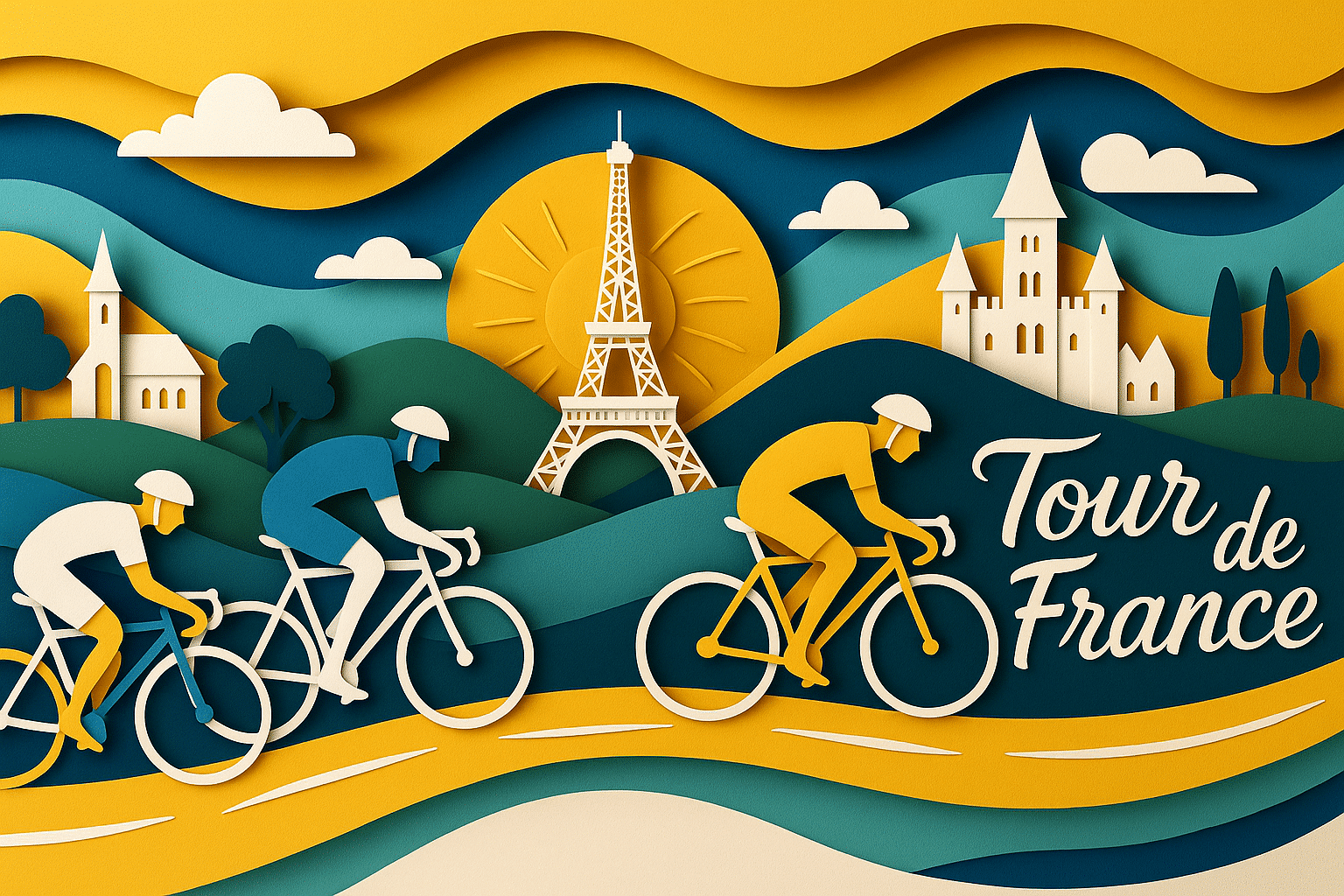What is the Tour de France?
The Tour de France is a multi-stage cycling race held every year in France. It lasts for about three weeks in July and includes 21 separate race days. Riders compete across various terrains, including flat roads, hills and steep mountain climbs. The event covers around 3,500 kilometres in total. It is widely considered the most prestigious cycling race in the world.
The competition attracts top athletes from international cycling teams. Riders aim to win individual stages or the overall title. The leader of the general classification wears the yellow jersey. Other jerseys are awarded for the best sprinter, best climber and best young rider. Millions of fans follow the race both in person and through media.
History and Origin
The Tour de France began in 1903. It was created by the French newspaper L’Auto to boost sales. The first edition had six stages and was won by Maurice Garin. Over time, the race expanded in both length and popularity. By the mid-twentieth century, it had become a global sporting event.
The race was paused during both World Wars but returned stronger each time. Legendary cyclists such as Eddy Merckx and Bernard Hinault became famous through their performances. In recent decades, the Tour has also faced scandals involving doping. Despite setbacks, it remains a symbol of endurance and excellence. The race continues to evolve with new routes, rules and riders each year.
The Tour is now organized by Amaury Sport Organisation and includes international stages beyond France. Mountain regions like the Alps and Pyrenees are central to the route. The final stage traditionally finishes on the Champs-Élysées in Paris. The event highlights both athletic performance and the beauty of the French landscape. Its combination of sport, culture and history gives it worldwide appeal.
Who participates in the Tour de France?
- Professional cyclists: Compete as part of top-level cycling teams.
- Team staff: Include coaches, mechanics, doctors and support crews.
- Race organisers: Handle logistics, route planning and safety.
- Media crews: Cover the race through television, online and print.
- Spectators: Line the roads and follow the race across the country.
Slogans and Themes
The Tour de France represents endurance, strategy and national pride. Slogans like “La Grande Boucle” and “Le Tour” are used to promote the race. Each year sometimes includes special themes such as sustainability or remembrance. The race route is designed to show the variety of French regions. Cultural landmarks, traditions and rural areas are part of the experience.
Colors, Symbols and Patterns
Colors
- Yellow: Symbol of the overall race leader.
- Green: Worn by the points classification leader.
- Polka dot: Indicates the best mountain rider.
- White: Given to the best young rider under 26.
Symbols
- Bicycle: Represents the core of the event.
- Champs-Élysées: Final destination of the race.
- Mountain peaks: Used to show climbing stages.
Patterns
- Stage maps: Show the route and elevation per day.
- Jersey designs: Help identify race leaders.
- Event logos: Used on vehicles, banners and clothing.
Most Used Hashtags
- #TourDeFrance
- #LeTour
- #TDF2025
- #YellowJersey
- #CyclingRace
How do you celebrate the Tour de France?
- Watch live stages: Follow the race on television or along the route.
- Join local rides: Many towns organise group rides during the event.
- Wear team jerseys: Support your favourite rider or team.
- Follow updates online: Use apps and websites for live standings.
- Host a viewing event: Invite others to watch mountain stages together.
Why is the Tour de France important?
The Tour de France is important because it showcases athletic skill and determination. It brings attention to the sport of cycling and encourages people to ride. The event also has strong cultural value in France and Europe. It celebrates the beauty of the landscape and highlights local towns and traditions. The race contributes to tourism and national pride.
It also teaches the value of teamwork and long-term strategy. Riders must cooperate with teammates and plan each stage carefully. The Tour is watched by millions worldwide, making it a powerful platform for sport and storytelling. Its mix of competition, tradition and emotion makes it unforgettable. Each edition adds new moments to a long and rich history.
